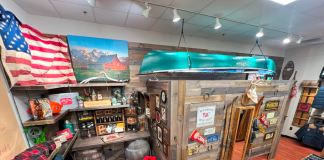Stronger than expected U.S. retail results continued through the month of June, even in the aftermath of a strong Prime Days promotional period.
Dollar sales of U.S. discretionary general merchandise rose 18 percent in the week ending July 3, over the same period two years ago, continuing at a pace that exceeds the 8 percent growth over last year, according to “Retail Early Indicator” data from The NPD Group.
While dollar sales of discretionary general merchandise grew 8 percent in the week ending July 3, units remained stable when compared to the same week in 2020. The disparity between dollar growth and unit growth continues.
“The consumer’s definition of value has changed. Rather than looking for deals, consumers are finding value in the ability to get what they want and need now,” said Marshal Cohen, chief retail industry advisor for NPD.
How much, and what consumers are spending in is just part of the story. Checkout information from NPD reveals that where and how consumers are shopping has changed as well. Some retail channels have experienced continued growth fortified by the pandemic, others benefited from pent-up demand, while others faced inescapable challenges:.
- Trends solidified by habits formed during the pandemic – Mass merchants, warehouse clubs, pure-play e-commerce, home hardware, and other channels have experienced growth over the past few years.
- Reflecting consumers’ zeal to regain normalcy – The off-price, sporting goods, specialty beauty, and manufacturer owned retail channels have bounced back, after challenges at the height of the pandemic.
- Pre-pandemic struggles intensified by pandemic trials – Lifted restrictions have given a boost to department stores, national chains, and apparel specialty following a difficult year, but not enough to get them back to normal levels.
“The continuation of robust retail spending proves that experiential spending isn’t roaring back,” added Cohen. “Experiential spending will shift some of the spending focus, but the shifts in where and how consumers are spending point to structural changes that are happening at U.S. retail.”








